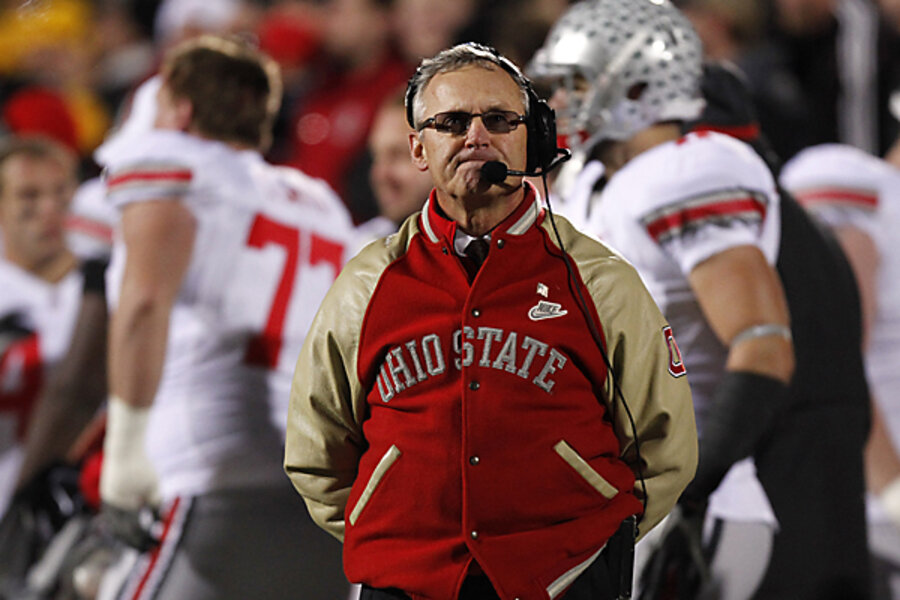Jim Tressel fiasco: Selling NCAA memorabilia? Wait.
Loading...
Some athletes possess a golden touch off the field as well as on it. A high-profile athlete can add value to gear just by owning it – and selling it for a pretty penny.
But if they're in college, there's a catch. Players can't sell memorabilia while they're in school, according to NCAA rules.
It was the violation of that rule that caused the NCAA in December to suspend Ohio State quarterback Terelle Pryor and four others for the first five games of the 2011season and suspend another player for one game. On Tuesday, the university also suspended coach Jim Tressel for two games and fined him $250,000 because he didn't report the matter after receiving e-mails about it last April.
Coach Tressel was publicly reprimanded and apologized Tuesday night, saying he had let some people down.
The Ohio State players involved in the illicit trade sold jerseys, championship rings, and trophies to the owner of a local tattoo parlor, making more than $7,000 and receiving $500 worth of discounted tattoos. Besides the suspension, they were required to pay back the money they received.
Memorabilia experts say the players made a dumb move for two reasons. Had the players waited to sell the items until they had graduated, they would not have violated NCAA rules. Also, they could have received a lot more money for their memorabilia.
The championship rings, uniform pieces, “gold pants” charms, and awards that the men sold are worth two or three times as much as they received for them, says Phil Castinetti, owner of a sports memorabilia shop in Saugus, Mass.
The rule against selling gear while playing in the NCAA is a relatively new one. It was created after nine football players at the University of Georgia were caught selling championship rings and a jersey on eBay in 2003.
At the time, the closest relevant rule was one that said players could not use their name and reputation to earn money, through selling autographs, for example. So, the nine players were not penalized, but they brought the issue to the NCAA’s attention.
Now, players who sell gear can face ineligibility or temporary suspension. However, if a player makes less than $100 on a sale, he or she is only required to donate the same amount to a charity.
Although it's illegal, the selling of memorabilia could be on the upswing, says Mark Jones, a lawyer at the Indianapolis firm Ice Miller, who works in NCAA compliance. “I’m under the impression that it’s becoming a bit more common,” he said, citing the Georgia wide receiver A.J. Green who was penalized in September 2010 for selling a jersey for $1,000.
“I would imagine that the kids are doing it on the side,” says Michael Gallucci, vice president of operations at online retailer Sportsmemorabilia.com. He says he never actually sees college players selling memorabilia, but he suspects there might be an underground market.





